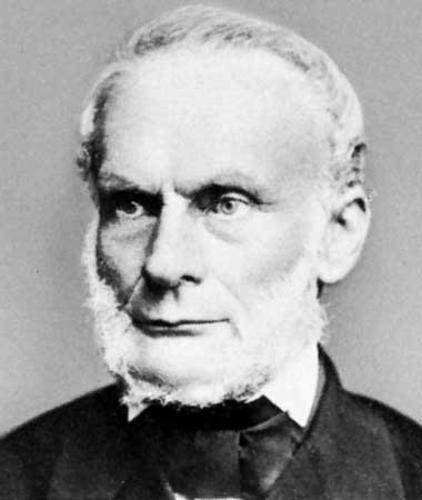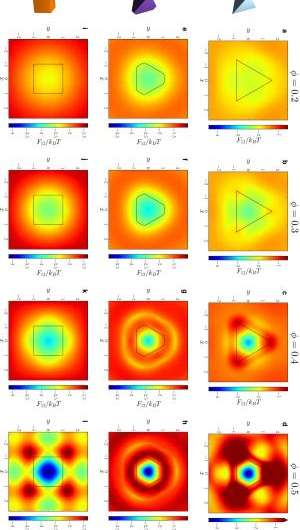The Laws of Thermodynamics help to study the function of Consciousness or Chetana

What it is to be a Substance? and What it is to Exist? We need to establish knowledge about the man on a firm basis and the information it provides must be tested for its accuracy and consistency with an external reality. We have to make the fundamental distinction between the living and the non-living matter. The scientific advances of the 19th and 20th centuries reinforced the materialistic position concerning the basic similarity of organic living and inorganic physical matter. The man is viewed as a product of natural evolution and is thought to be subject to the same laws of Physics and Chemistry or mechanistic principles.

We need a methodology to study philosophy and to understand philosophical statements. Logical Positivism, also known as Scientific Empiricism aims to clarify concepts in both everyday and scientific language. It describes analysis of language as the function of philosophy. This analysis of language and of concepts is important to understand questions of belief and ideology which affect what we think we ought to do individually and socially. I use this method of ‘Applied Philosophy’ to analyze the concept of Spiritual Optics, the Spiritual Connection between Energy and Life. The Laws of Thermodynamics are important unifying principles of Biology. The First Law of Thermodynamics, also known as the Law of Conservation of Energy, states that Energy can neither be created nor destroyed. Spiritual Optics accounts for the capacity of photoreception and the term Spiritual Light refers to the creation of Light by God to begin the designing of Matter described by Physics and Chemistry. I may not be able to discover the Purpose in my Life if I exist in Spiritual Darkness.

Thermodynamics and Entropy:

Thermodynamics is the branch of science concerned with the nature of Heat and its conversion into other forms of energy. Heat is internal energy of a substance and it is a form of energy associated with the positions and motions of its component molecules, atoms, and ions. The total energy that a body contains as a result of the positions and the motions of its component parts is called its internal energy. The First Law of Thermodynamics states: “In any process, energy can be changed from one form to another (including heat and work), but it is never created or destroyed.” In any process, the change in a System’s internal energy is equal to the heat absorbed from the environment minus the work done on the environment. This Law of Conservation of Heat is similar to the Law of Conservation of Energy. According to the Second Law of Thermodynamics, during any spontaneous process, the change in entropy of a System is either zero or positive. The term ‘entropy’ in Thermodynamics indicates the degree to which a given quantity of thermal energy is available for doing useful work- the greater the entropy, the less available the energy. A consequence of the Second Law is that an engine can deliver work only when heat is transferred from a hot reservoir to a cold reservoir or heat sink. In 1877, Ludwig Boltzmann, an Austrian physicist demonstrated the significance of entropy on the molecular level relating entropy to disorder at the level of the molecules of the System. This concept of entropy as a measure of disorder is also used in Information Theory. Entropy represents quantity specifying the amount of disorder or randomness in a System bearing energy or information. However, in Information Theory, entropy represents the “noise”, or random errors occurring in the transmission of signals or messages. It is important to know that heat and work are related and represent forms of energy that can be inter-converted. The study of Thermodynamics is central to both Chemistry and Physics and is useful in understanding biological processes such as Temperature Regulation in human body. While Thermodynamics studies changes in Physical State or Condition such as solid ice becoming liquid water, it is important to remember that the chemical properties of water molecules remain the same while the physical condition of water may change from solid,liquid, and gas.
Temperature Regulation and Spiritualism:

The ability of an organism to keep body temperature within certain boundaries is critical for the survival of the organism. Human body maintains its internal body temperature close to 37 degrees centigrade by balancing heat production and heat loss.

The external physical laws of thermal exchange which influence the body heat balance are Conduction, Radiation, Convection, and Evaporation from the body surface. In all medical conditions and health conditions that are related to climatic variation in temperature such as Hypothermia, or Heat Stroke (Heat Hyperpyrexia), the medical interventions use the principles of Thermodynamics.
The Living System is an Open System that is thermodynamically unstable and hence it constantly requires input of energy from an external source. Life comes into existence when energy-yielding molecules and energy-demanding molecules come together in a spiritual relationship. The term ‘Spiritual’ describes the nature of a relationship, a partnership, a connection, bonding, or an association between chemical molecules based upon characteristics such as that of providing some benefit to keep the System to continue its functions.

In a Living System, the conversion of energy into work involves the operation of Consciousness and the application of Knowledge. Consciousness or awareness is the mechanism that operates the structural and functional relationship between molecules. Consciousness is the principle by which a Living System that is thermodynamically unstable knows the fact of its own existence, it knows as to where it exists and knows as to how it is existing. Hence, Consciousness is a Spiritual mechanism as it establishes a relationship between the energy-dependent Living System and its energy-yielding provider. This is a relationship that requires use of Knowledge which is defined as the fact of knowing a range of information which is used to perform highly selective, sequential tasks under proper guidance. In the operation of a Living System, there is no random, unguided and unpredictable movement of molecules.
I speak about Life as structural and functional organization of matter with implanted knowledge. Spiritualism is the potency that generates the experience of Peace, Harmony, and Tranquility in the interactions within the Living System and between Living Systems. The statement, “When Entropy leads to Order” is not applicable to the Living Systems that are Open. Soul or Spirit is the Life Principle; the vital or animating principle found in all the Living Things. Spiritualism is the guiding mechanism to establish Order in Biotic Actions and Interactions and the term ‘Disorder’ is often associated with either dysfunction or disease.
WHEN ENTROPY LEADS TO ORDER:

The second law of thermodynamics says that in a closed system, entropy — colloquially thought of as a measure of disorder or uncertainty — cannot decrease. Sharon Glotzer studies the counterintuitive instances when entropy doesn’t work that way.
Researchers trying to herd tiny particles into useful ordered formations have found an unlikely ally: entropy, a tendency generally described as “disorder.” Computer simulations by University of Michigan scientists and engineers show that the property can nudge particles to form organized structures. By analyzing the shapes of the particles beforehand, they can even predict what kinds of structures will form.The findings, published in Science, help lay the ground rules for making designer materials with wild capabilities such as shape-shifting skins to camouflage a vehicle or optimize its aerodynamics.Physicist and chemical engineering professor Sharon Glotzer proposes that such materials could be designed by working backward from the desired properties to generate a blueprint. That design can then be realized with nanoparticles—particles a thousand times smaller than the width of a human hair that can combine in ways that would be impossible through ordinary chemistry alone.One of the major challenges is persuading the nanoparticles to create the intended structures, but recent studies by Glotzer’s group and others showed that some simple particle shapes do so spontaneously as the particles are crowded together. The team wondered if other particle shapes could do the same.”We studied 145 different shapes, and that gave us more data than anyone has ever had on these types of potential crystal-formers,” Glotzer said, “With so much information, we could begin to see just how many structures are possible from particle shape alone, and look for trends.”Using computer code written by chemical engineering research investigator Michael Engel, applied physics graduate student Pablo Damasceno ran thousands of virtual experiments, exploring how each shape behaved under different levels of crowding. The program could handle any polyhedral shape, such as dice with any number of sides. Left to their own devices, drifting particles find the arrangements with the highest entropy. That arrangement matches the idea that entropy is a disorder if the particles have enough space: they disperse, pointed in random directions. But crowded tightly, the particles began forming crystal structures like atoms do—even though they couldn’t make bonds. These ordered crystals had to be the high-entropy arrangements, too.

Glotzer explains that this isn’t really disorder creating order—entropy needs its image updated. Instead, she describes it as a measure of possibilities. If you could turn off gravity and empty a bag full of dice into a jar, the floating dice would point every which way. However, if you keep adding dice, eventually space becomes so limited that the dice have more options to align face-to-face. The same thing happens to the nanoparticles, which are so small that they feel entropy’s influence more strongly than gravity’s. “It’s all about options. In this case, ordered arrangements produce the most possibilities, the most options. It’s counterintuitive, to be sure,” Glotzer said.The simulation results showed that nearly 70% of the shapes tested produced crystal-like structures under entropy alone. But the shocker was how complicated some of these structures were, with up to 52 particles involved in the pattern that repeated throughout the crystal.”That’s an extraordinarily complex crystal structure even for atoms to form, let alone particles that can’t chemically bond,” Glotzer said.The particle shapes produced three crystal types: regular crystals like salt, liquid crystals as found in some flat-screen televisions and plastic crystals in which particles can spin in place. By analyzing the shape of the particle and how groups of them behave before they crystallize, Damasceno said that it is possible to predict which type of crystal the particles would make.”The geometry of the particles themselves holds the secret for their assembly behavior,” he said.Why the other 30% never formed crystal structures, remaining as disordered glasses, is a mystery.”These may still want to form crystals but got stuck. What’s neat is that for any particle that gets stuck, we had other, awfully similar shapes forming crystals,” Glotzer said.In addition to finding out more about how to coax nanoparticles into structures, her team will also try to discover why some shapes resist order.
This research was supported by the U.S. Department of Defense, and the Deutsche Forschungsgemeinschaft (M.E.). The paper is titled “Predictive Self-Assembly of Polyhedra into Complex Structures.

Glotzer is the Stuart W. Churchill Collegiate Professor of Chemical Engineering and a professor of chemical engineering, materials science and engineering, macromolecular science and engineering, and physics in College of Literature, Science, and the Arts.
Source: https://news.umich.edu/entropy-can-lead-to-order-paving-the-route-to-nanostructures/
University of Michigan



